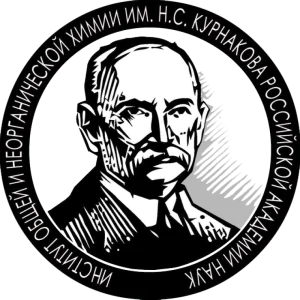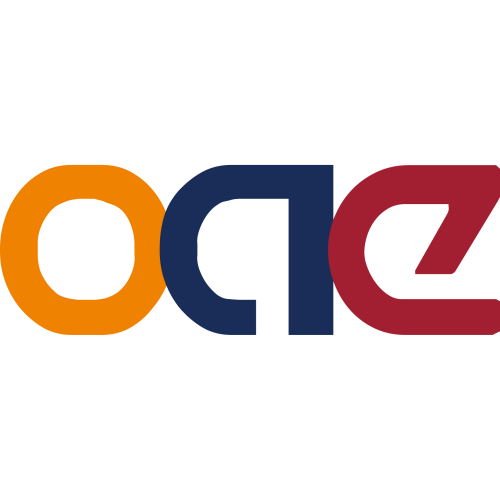Open Access


A stable quasi-solid electrolyte improves the safe operation of highly efficient lithium-metal pouch cells in harsh environments
Publication type: Journal Article
Publication date: 2022-03-21
scimago Q1
wos Q1
SJR: 4.761
CiteScore: 23.4
Impact factor: 15.7
ISSN: 20411723
PubMed ID:
35314688
General Chemistry
General Biochemistry, Genetics and Molecular Biology
General Physics and Astronomy
Abstract
Nanoconfined/sub-nanoconfined solvent molecules tend to undergo dramatic changes in their properties and behaviours. In this work, we find that unlike typical bulk liquid electrolytes, electrolytes confined in a sub-nanoscale environment (inside channels of a 6.5 Å metal-organic framework, defined as a quasi-solid electrolyte) exhibits unusual properties and behaviours: higher boiling points, highly aggregated configurations, decent lithium-ion conductivities, extended electrochemical voltage windows (approximately 5.4 volts versus Li/Li+) and nonflammability at high temperatures. We incorporate this interesting electrolyte into lithium-metal batteries (LMBs) and find that LMBs cycled in the quasi-solid electrolyte demonstrate an electrolyte interphase-free (CEI-free) cathode and dendrite-free Li-metal surface. Moreover, high-voltage LiNi0.8Co0.1Mn0.1O2//Li (NCM-811//Li with a high NCM-811 mass loading of 20 mg cm−2) pouch cells assemble with the quasi-solid electrolyte deliver highly stable electrochemical performances even at a high working temperature of 90 °C (171 mAh g−1 after 300 cycles, 89% capacity retention; 164 mAh g−1 after 100 cycles even after being damaged). This strategy for fabricating nonflammable and ultrastable quasi-solid electrolytes is promising for the development of safe and high-energy-density LIBs/LMBs for powering electronic devices under various practical working conditions. Solvent molecules under nanoconfinement dictates several key physical properties. Here, the authors reveal the behaviour of a quasi-solid electrolyte by using a microporous metal-organic framework with a small amount of liquid electrolyte influencing a number of properties in a lithium-metal pouch-cell.
Found
Nothing found, try to update filter.
Found
Nothing found, try to update filter.
Top-30
Journals
|
2
4
6
8
10
12
14
16
|
|
|
Advanced Materials
16 publications, 7.92%
|
|
|
Energy Storage Materials
14 publications, 6.93%
|
|
|
Angewandte Chemie - International Edition
13 publications, 6.44%
|
|
|
Angewandte Chemie
13 publications, 6.44%
|
|
|
Chemical Engineering Journal
10 publications, 4.95%
|
|
|
Advanced Functional Materials
9 publications, 4.46%
|
|
|
Advanced Energy Materials
8 publications, 3.96%
|
|
|
Small
7 publications, 3.47%
|
|
|
Journal of Colloid and Interface Science
6 publications, 2.97%
|
|
|
Journal of Materials Chemistry A
6 publications, 2.97%
|
|
|
Batteries
5 publications, 2.48%
|
|
|
Energy and Environmental Science
5 publications, 2.48%
|
|
|
Nano Energy
4 publications, 1.98%
|
|
|
ACS Nano
4 publications, 1.98%
|
|
|
Journal of Power Sources
4 publications, 1.98%
|
|
|
ACS applied materials & interfaces
4 publications, 1.98%
|
|
|
Nano-Micro Letters
3 publications, 1.49%
|
|
|
Nano Letters
3 publications, 1.49%
|
|
|
Advanced Science
3 publications, 1.49%
|
|
|
Journal of Energy Storage
3 publications, 1.49%
|
|
|
Journal of Energy Chemistry
3 publications, 1.49%
|
|
|
ACS Energy Letters
3 publications, 1.49%
|
|
|
Chemical Society Reviews
3 publications, 1.49%
|
|
|
Energy & Fuels
2 publications, 0.99%
|
|
|
Materials Chemistry Frontiers
2 publications, 0.99%
|
|
|
New Journal of Chemistry
2 publications, 0.99%
|
|
|
Chemical Communications
2 publications, 0.99%
|
|
|
Science Bulletin
2 publications, 0.99%
|
|
|
Rare Metals
2 publications, 0.99%
|
|
|
Battery Energy
2 publications, 0.99%
|
|
|
2
4
6
8
10
12
14
16
|
Publishers
|
10
20
30
40
50
60
70
80
|
|
|
Wiley
79 publications, 39.11%
|
|
|
Elsevier
58 publications, 28.71%
|
|
|
American Chemical Society (ACS)
22 publications, 10.89%
|
|
|
Royal Society of Chemistry (RSC)
22 publications, 10.89%
|
|
|
MDPI
6 publications, 2.97%
|
|
|
Springer Nature
5 publications, 2.48%
|
|
|
IOP Publishing
2 publications, 0.99%
|
|
|
Saratov State University
1 publication, 0.5%
|
|
|
Cambridge University Press
1 publication, 0.5%
|
|
|
Autonomous Non-profit Organization Editorial Board of the journal Uspekhi Khimii
1 publication, 0.5%
|
|
|
The Electrochemical Society of Japan
1 publication, 0.5%
|
|
|
Taylor & Francis
1 publication, 0.5%
|
|
|
The Electrochemical Society
1 publication, 0.5%
|
|
|
OAE Publishing Inc.
1 publication, 0.5%
|
|
|
Oxford University Press
1 publication, 0.5%
|
|
|
10
20
30
40
50
60
70
80
|
- We do not take into account publications without a DOI.
- Statistics recalculated weekly.
Are you a researcher?
Create a profile to get free access to personal recommendations for colleagues and new articles.
Metrics
202
Total citations:
202
Citations from 2024:
128
(63%)
Cite this
GOST |
RIS |
BibTex
Cite this
GOST
Copy
Chang Z. et al. A stable quasi-solid electrolyte improves the safe operation of highly efficient lithium-metal pouch cells in harsh environments // Nature Communications. 2022. Vol. 13. No. 1. 1510
GOST all authors (up to 50)
Copy
Chang Z., Yang H., Zhu X., He P., Zhou H. A stable quasi-solid electrolyte improves the safe operation of highly efficient lithium-metal pouch cells in harsh environments // Nature Communications. 2022. Vol. 13. No. 1. 1510
Cite this
RIS
Copy
TY - JOUR
DO - 10.1038/s41467-022-29118-6
UR - https://doi.org/10.1038/s41467-022-29118-6
TI - A stable quasi-solid electrolyte improves the safe operation of highly efficient lithium-metal pouch cells in harsh environments
T2 - Nature Communications
AU - Chang, Zhi
AU - Yang, Huijun
AU - Zhu, Xingyu
AU - He, Ping
AU - Zhou, Haoshen
PY - 2022
DA - 2022/03/21
PB - Springer Nature
IS - 1
VL - 13
PMID - 35314688
SN - 2041-1723
ER -
Cite this
BibTex (up to 50 authors)
Copy
@article{2022_Chang,
author = {Zhi Chang and Huijun Yang and Xingyu Zhu and Ping He and Haoshen Zhou},
title = {A stable quasi-solid electrolyte improves the safe operation of highly efficient lithium-metal pouch cells in harsh environments},
journal = {Nature Communications},
year = {2022},
volume = {13},
publisher = {Springer Nature},
month = {mar},
url = {https://doi.org/10.1038/s41467-022-29118-6},
number = {1},
pages = {1510},
doi = {10.1038/s41467-022-29118-6}
}



















